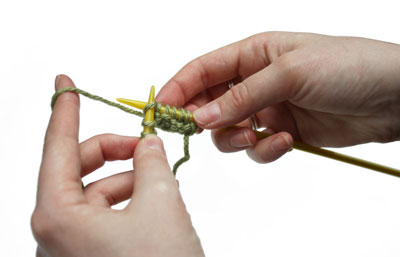This column by Barbara Breiter, author of The Complete Idiot’s Guide to Knitting & Crocheting, originally appeared in The Weekly Stitch newsletter.
As you work on shaping a project, a pattern may ask you to increase or decrease a specific number of stitches evenly across a row or round. But it won’t tell you how often to do this…just to do it evenly.

You don’t want the increases or decrease bunched up together at one point because it would make your piece lopsided. To avoid this, you want them spaced as evenly as possible across the row or round.
So you’ll need to do some simple math in order to determine how often to increase or decrease so they are spread out evenly.
Working in rows, if you have 100 stitches and need to increase 10 (plus add one stitch remember!), divide 100 by 11 and the answer is 9.09. Obviously, you cannot increase every 9.09 stitches. In this case, you would increase 1 stitch every 9 stitch 9 times and 1 stitch every 10th stitch 1 time.
9×9=81
10×1=10
Work the last 9 stitches after the last increase=9
81+10+9=100
Knitting in the round, let’s look at increasing 11 stitches on a row where you had 100 stitches to begin. Again, that is one stitch every 9.09 stitches. Here, you’d have to cheat again, but you would increase 1 stitch every 9th stitch 10 times and 1 stitch every 10th stitch 1 time.
9 x 10 = 90
1 x 10 = 10
Total = 100
When decreasing, remember that you are using two stitches every time you decrease. So, although the math above remains true for decreasing, the frequency you arrive at is true prior to the decreases.
Example: If you have 100 stitches and you are to decrease 10 you add 1 to 10, equaling 11. Dividing 110 by 11 equals 10 so you would decrease one stitch every 10th stitch. This means the decrease is worked over stitches 10 and 11, the next decrease is worked over stitches 20 and 21, then 30 and 31, etc.
See our Learn to Knit guide for videos, illustrations, and instructions on different increasing and decreasing techniques. Join Barbara again next month for more tips for knitters and crocheters.
–-
To sign up for the Weekly Stitch and get columns like this, free patterns, how-to videos and more, click here.
How to Increase in a Row or in the Round | Yarn Buyer
[…] http://blog.lionbrand.com/2014/06/09/how-to-increase-in-a-row-or-in-the-round/ […]
Jeannette
When decreasing by this method, you would have to decrease stitches 100 and 101 which would be impossible as stitch 101 does not exist. Not sure why the formula is ten plus one. Dividing 100 by 10 gives you 10. Every 10th stitch needs to be decreased. As in knit stitch 9 and 10 togethr then 19 and 20 and so on. Anyway that’s how I do it.